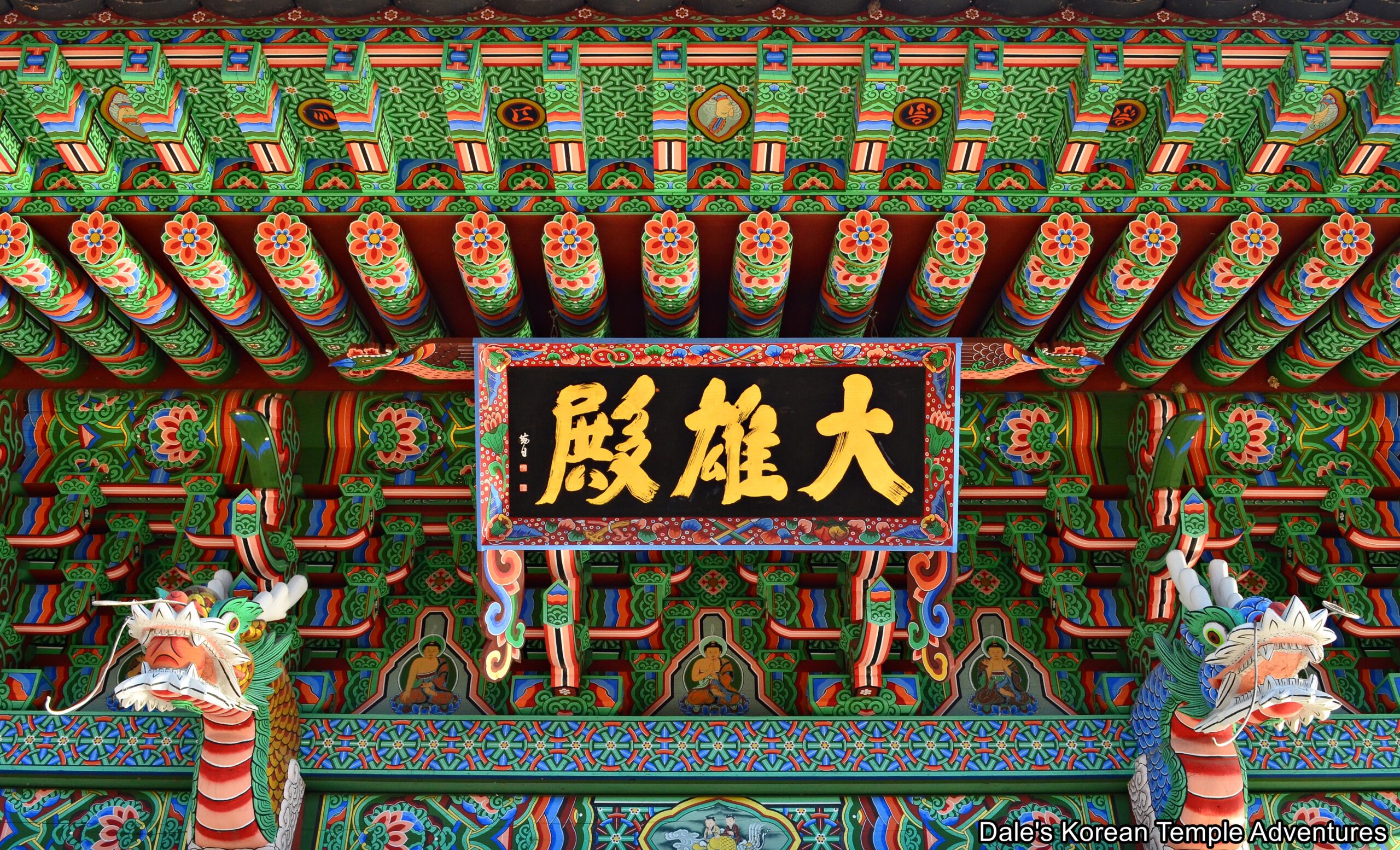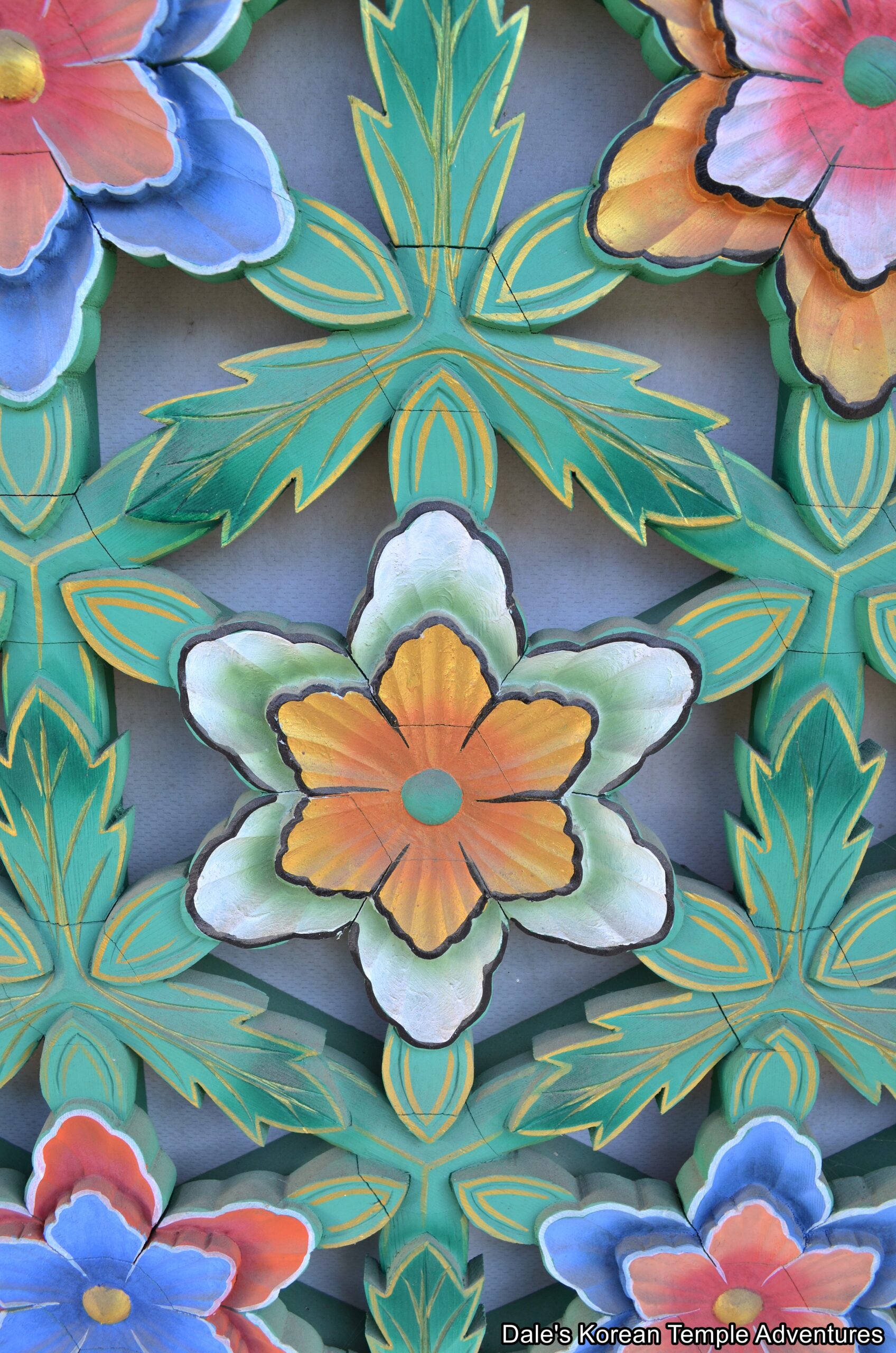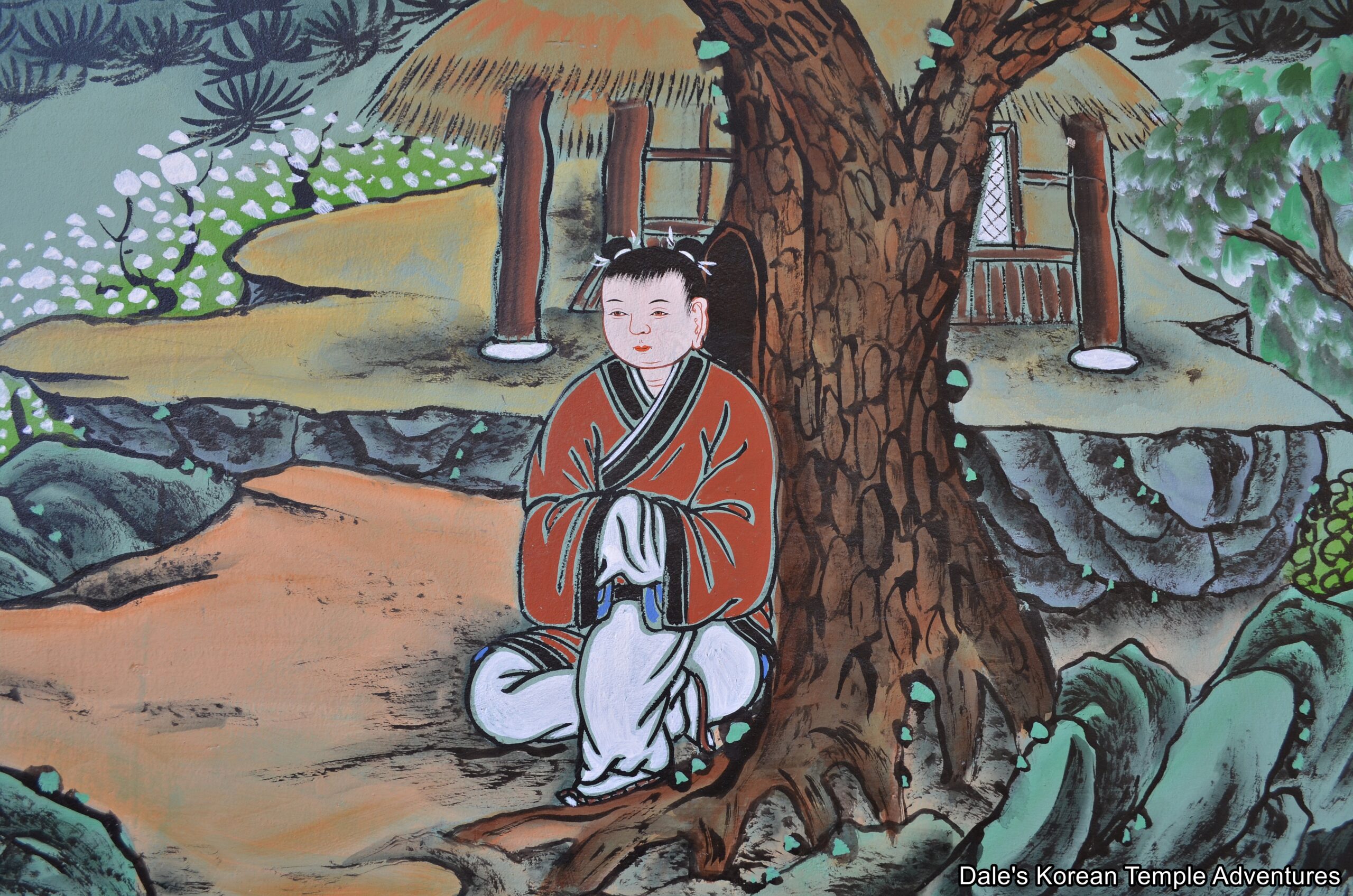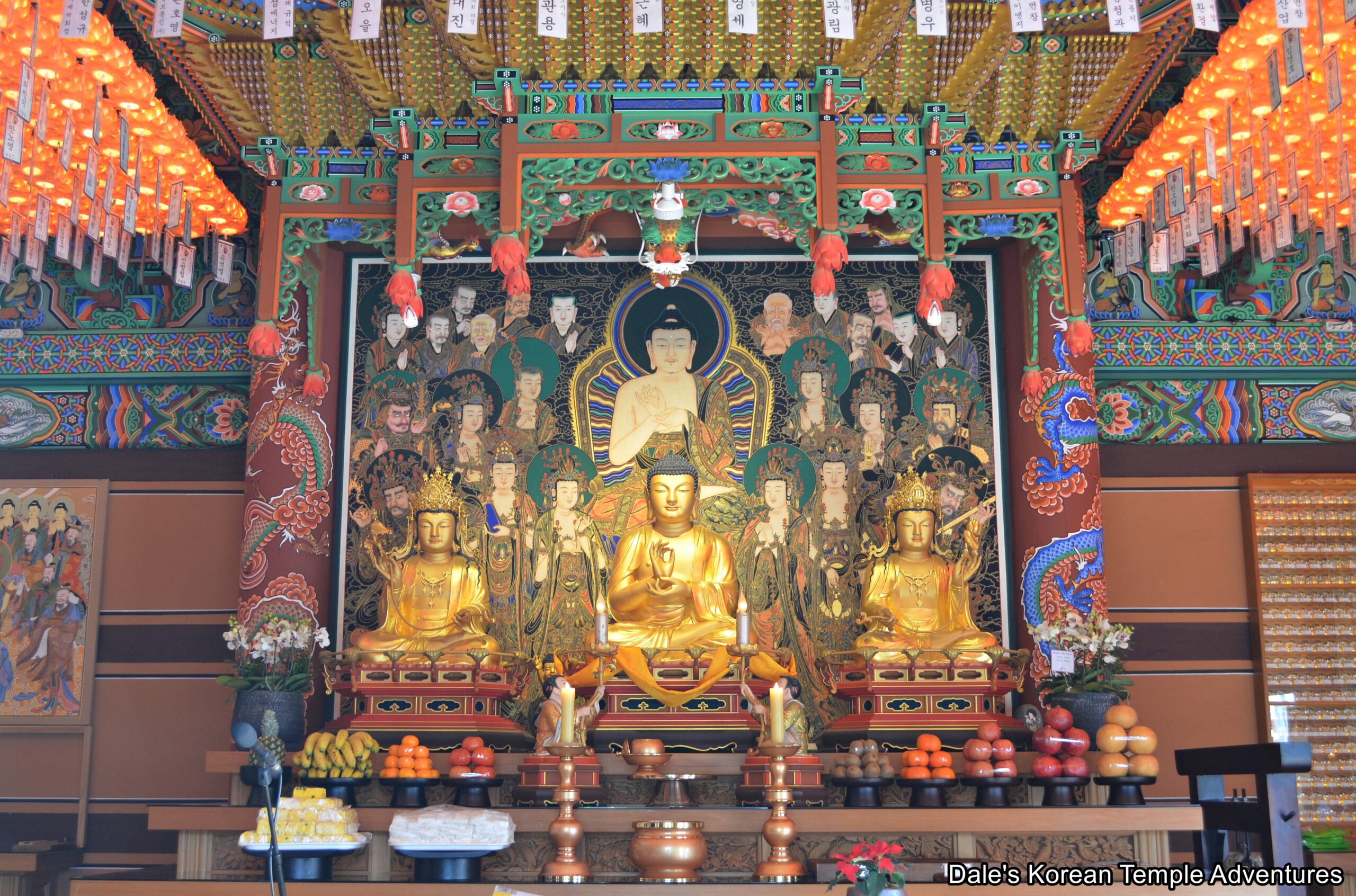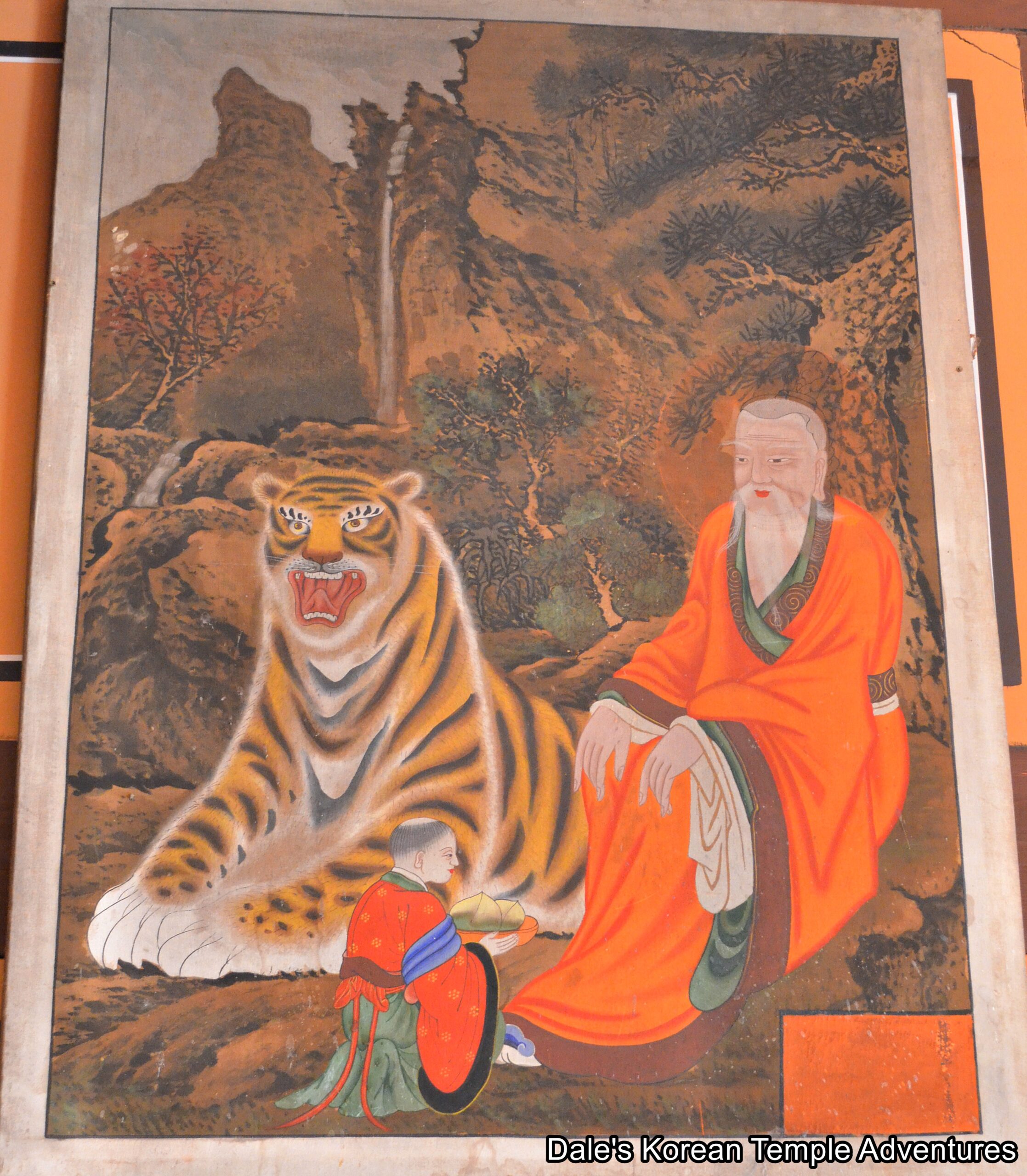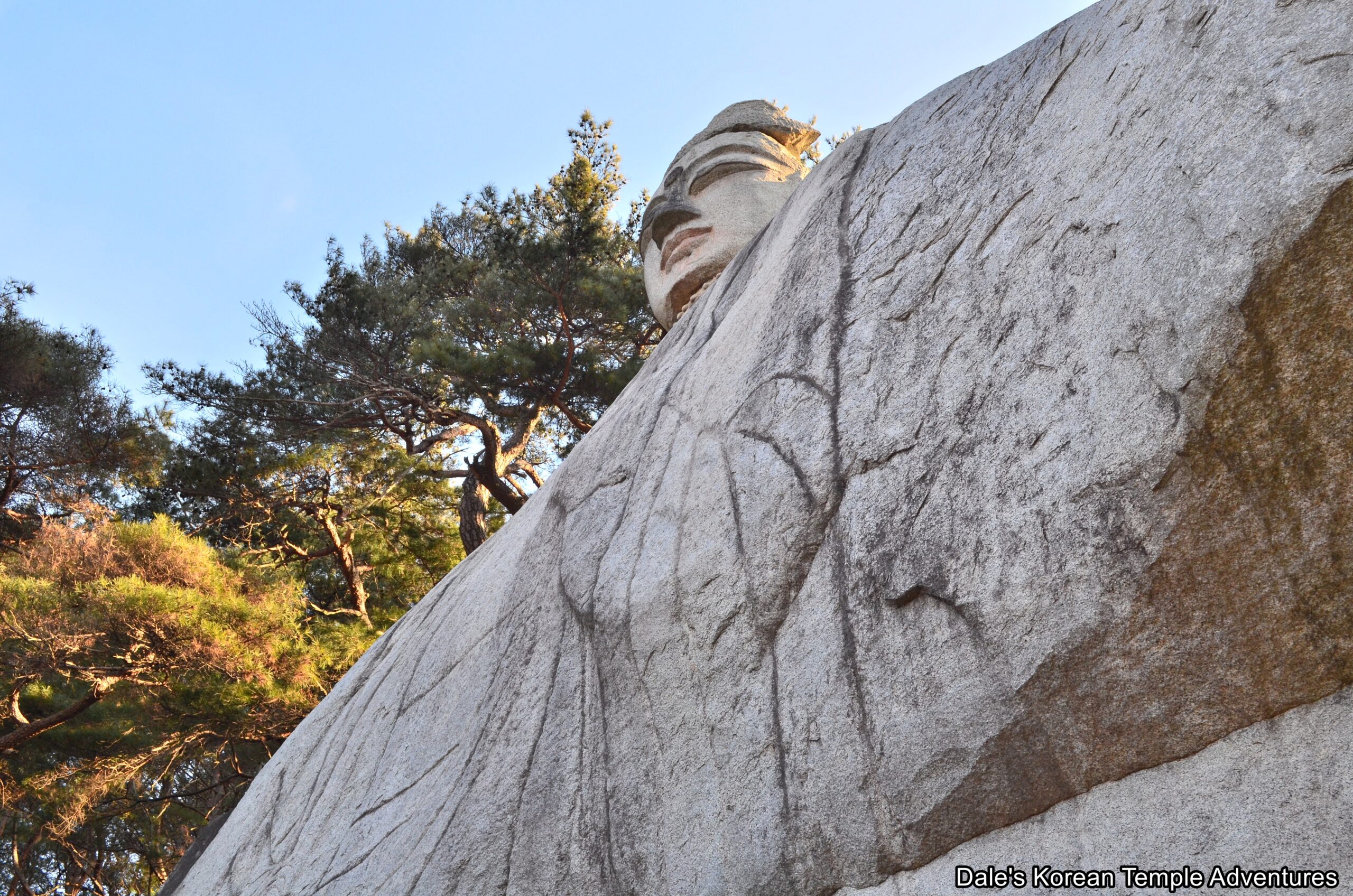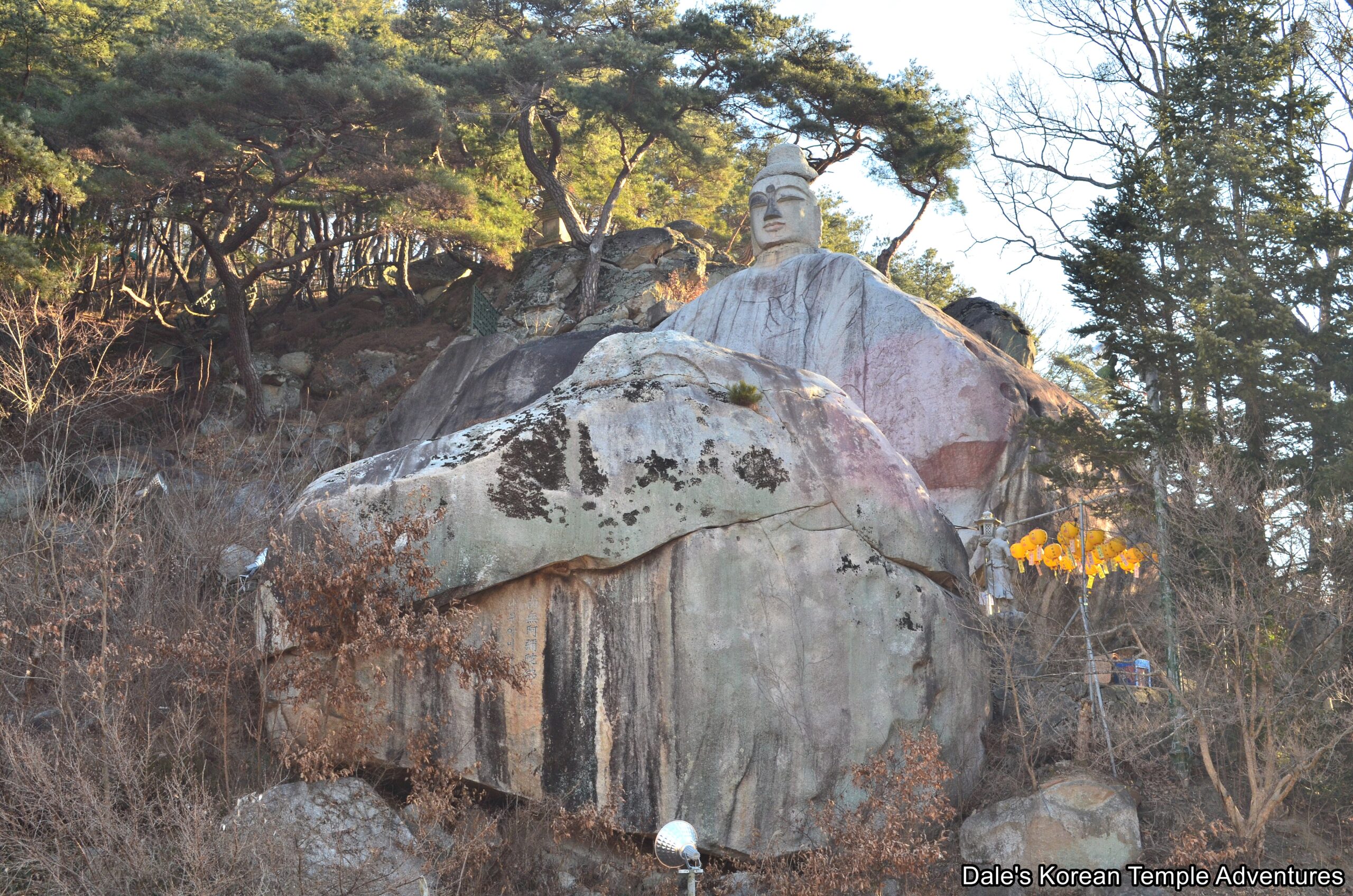Yeonmisa Temple – 연미사 (Andong, Gyeongsangbuk-do)
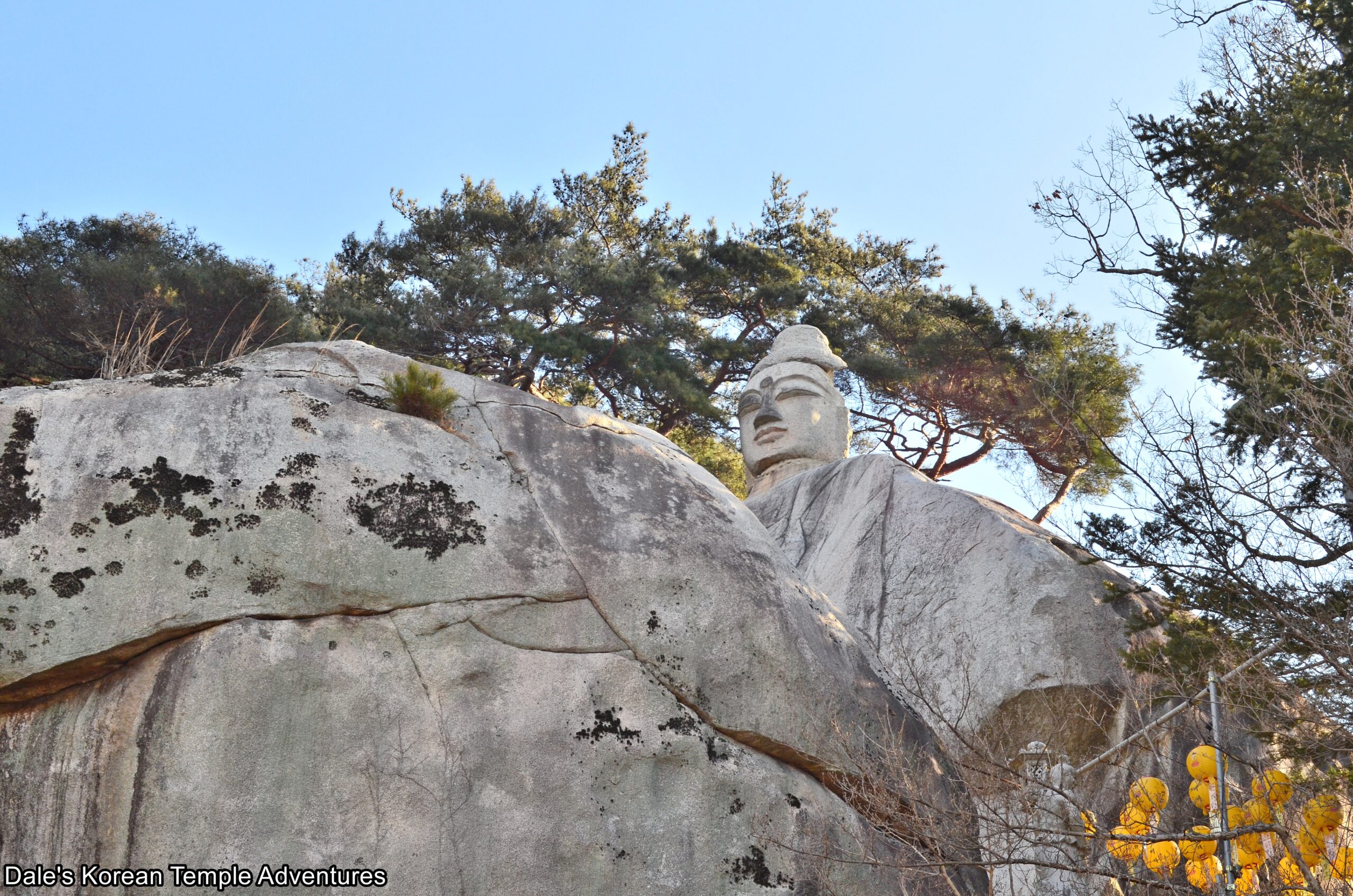
Temple History
Yeonmisa Temple, which means “Swallow Tail Temple” in English, is located in northern Andong, Gyeongsangbuk-do. It’s believed that the temple was first founded in 634 A.D. by the monk Myeongdeok and then rebuilt twice. After its founding, very little is known about the temple’s history. During the Goryeo Dynasty (918-1392), the area that Yeonmisa Temple is located was a popular place for officials traveling in the area between provinces. This area is now known as Jebiwon.
During the Joseon Dynasty (1392-1910), the temple fell into disrepair. It was only later, and during Japanese Colonial Rule (1910-45), that Yeonmisa Temple was rebuilt in 1918. The temple was rebuilt on the former site of Yeonmisa Temple. And it was further restored in both 1943 and 1947. In 1978, the Daeung-jeon Hall was extended and the temple paintings were added in 1986. Now the temple is run by nuns.
Yeonmisa Temple is also home to the “Rock-carved Standing Buddha in Icheon-dong,” which is Korean Treasure #115. According to a legend, the Buddha carving was commissioned by a famous mason. However, his student was more skilled. So one day, while the student was working on the relief, the teacher removed the ladder. Then the master turned into a swallow and flew away up into the sky. This is one source of the temple’s name. Another legend has it that the Yosache (monks’ dorms) was located to the rear of the relief, which made it look like a swallow’s tail.
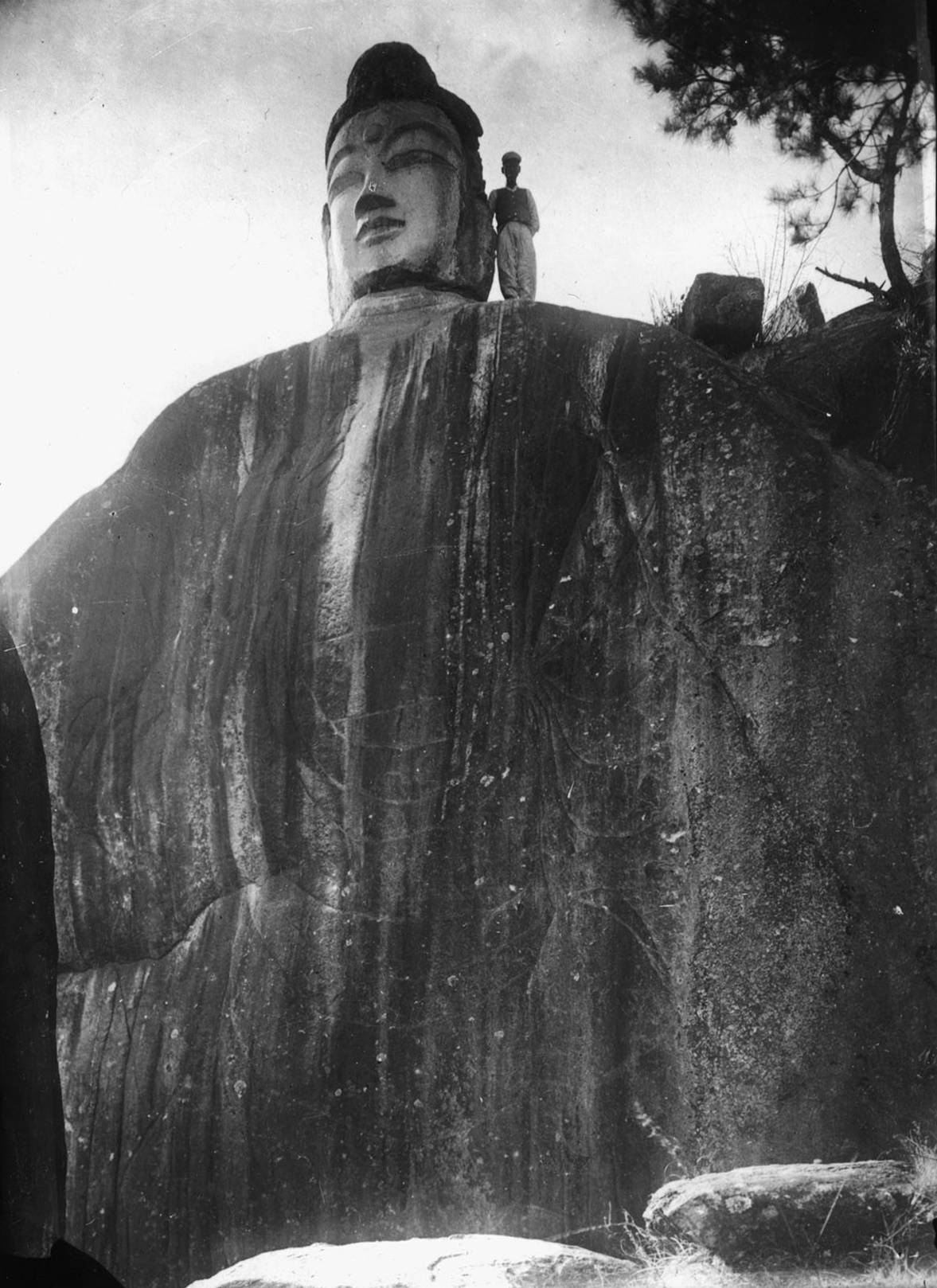
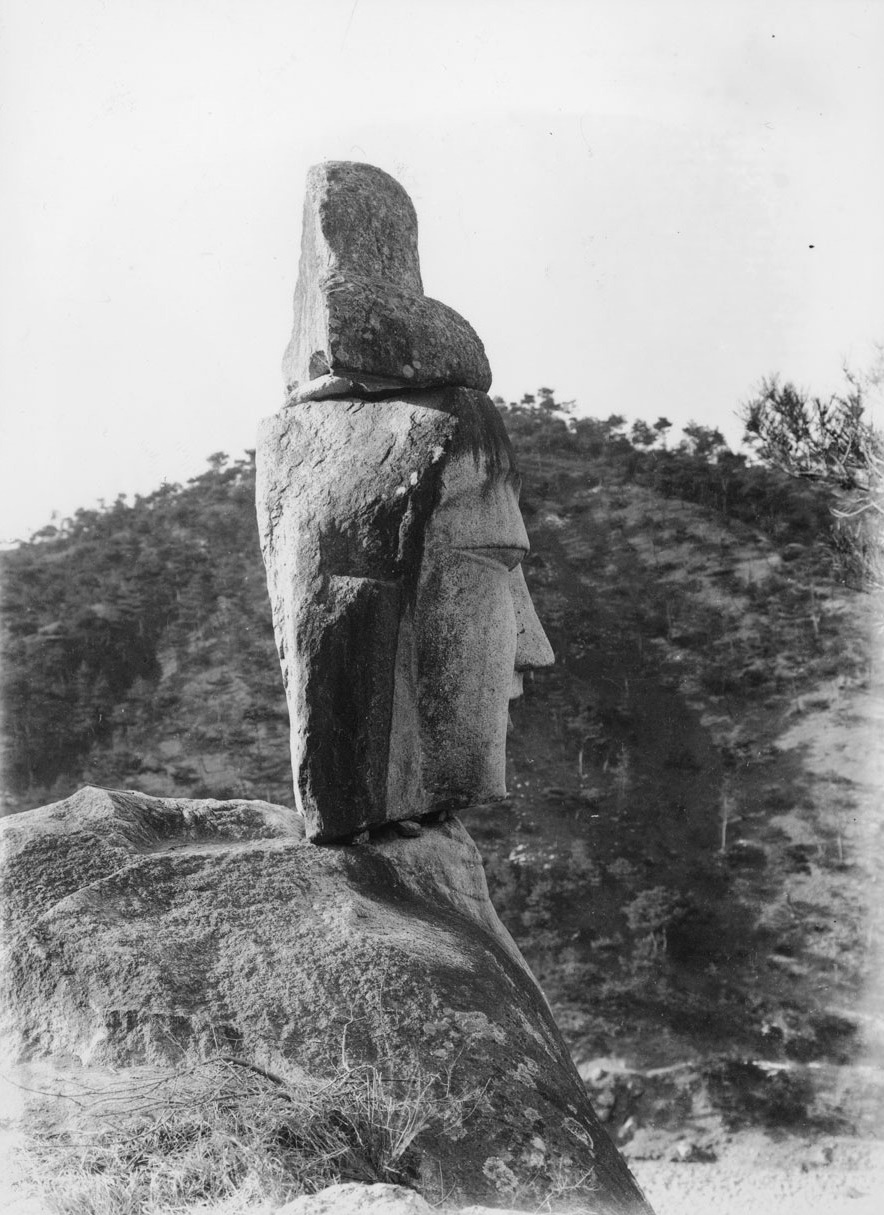
Temple Layout
As you approach the temple grounds, you’ll notice that there are a collection of buildings at Yeonmisa Temple. In the centre of these buildings is the Daeung-jeon Hall. The exterior walls to the Daeung-jeon Hall are adorned with the Shimu-do (Ox-Herding Murals). Additionally, the front floral latticework is stunning. Stepping inside the Daeung-jeon Hall, and resting on the main altar, are a triad of statues centred by Seokgamoni-bul (The Historical Buddha). This central image is joined on either side by statues of Munsu-bosal (The Bodhisattva of Wisdom) and Bohyeon-bosal (The Bodhisattva of Power). To the right of this triad is an orangish painting dedicated to Sanshin (The Mountain Spirit). And to the left of the main altar are two additional murals. One of these paintings is dedicated to Chilseong (The Seven Stars), while the other is a Shinjung Taenghwa (Guardian Mural).
To the right of the Daeung-jeon Hall are a collection of buildings that include the nuns’ dorms, administrative offices, and the temple parking lot. But it’s to the left of the main hall, and down a short path, that you’ll find the main highlight at the temple: the “Rock-carved Standing Buddha in Icheon-dong.” Along the way, there are several smaller statues of various Buddhas and Bodhisattvas, as well as a coin collecting statue of a jovial Podae-hwasang (The Hempen Bag).
Finally arriving at the “Rock-carved Standing Buddha in Icheon-dong,” which is also known as the “Jebiwon-seokbul,” you’ll find yourself looking up at the 12.38 metre tall image of Amita-bul (The Buddha of the Western Paradise). The image was created in two parts. This was a common method done during the Goryeo Dynasty. The head of Amita-bul was first sculpted and then attached to the image carved on the rock wall. The back of the head of the statue was completely destroyed; however, the front of the head was left intact. The protruding part on top of the Buddha’s head, which symbolizes supreme wisdom, is relatively high. It has long eyes and thick lips that are serenely smiling. Despite its large size and large body, the statue is well-balanced.
The image of Amita-bul stands on a lotus pedestal. There are folds in the robe, and it covers both of the shoulders to the statue of Amita-bul. The index fingers and middle fingers of each hand are placed together. The left hand is placed on its chests, while the right hand is situated on the stomach. There is still a little bit of orange paint left on the head, which indicates that the statue used to be painted (at least in part). It’s believed that the image was carved sometime in the 11th century. This style of large Buddha statues was a dominant style of folk Buddha statues created during the Goryeo Dynasty.
You can get a better idea of the full size of the statue, if you stand in the nearby park at some distance. It’s also at the base of the rock that somewhat obscures the full image of the statue that you can read an inscription that reads “이미타불” (Amita-bul).
How To Get There
To get to Yeonmisa Temple from the Andong Intercity Bus Terminal, you’ll need to take Bus #56. After 13 stops, or 22 minutes, you’ll need to get off at the “이천동 석불상하차 – Icheon-dong Seokbulsang” bus stop. From where the bus drops you off, you’ll need to walk about 200 metres, or 5 minutes, to get to the temple grounds.
You can take a bus, or you can simply take a taxi from the Andong Intercity Bus Terminal to get to Yeonmisa Temple. The ride should take about 12 minutes and cost about 9,000 won (one way).
Overall Rating: 6/10
By far, the main highlight at Yeonmisa Temple is the impressive “Rock-carved Standing Buddha in Icheon-dong.” Standing over 12 metres in height, comprised of two pieces, and dating back to the Goryeo Dynasty, it’s no wonder that this image of Amita-bul is the central highlight to any visit to Yeonmisa Temple. Other things to keep a look out for is the artwork around the Daeung-jeon Hall, as well as the image of Sanshin (The Mountain Spirit) inside the main hall and the floral latticework outside the main hall.
